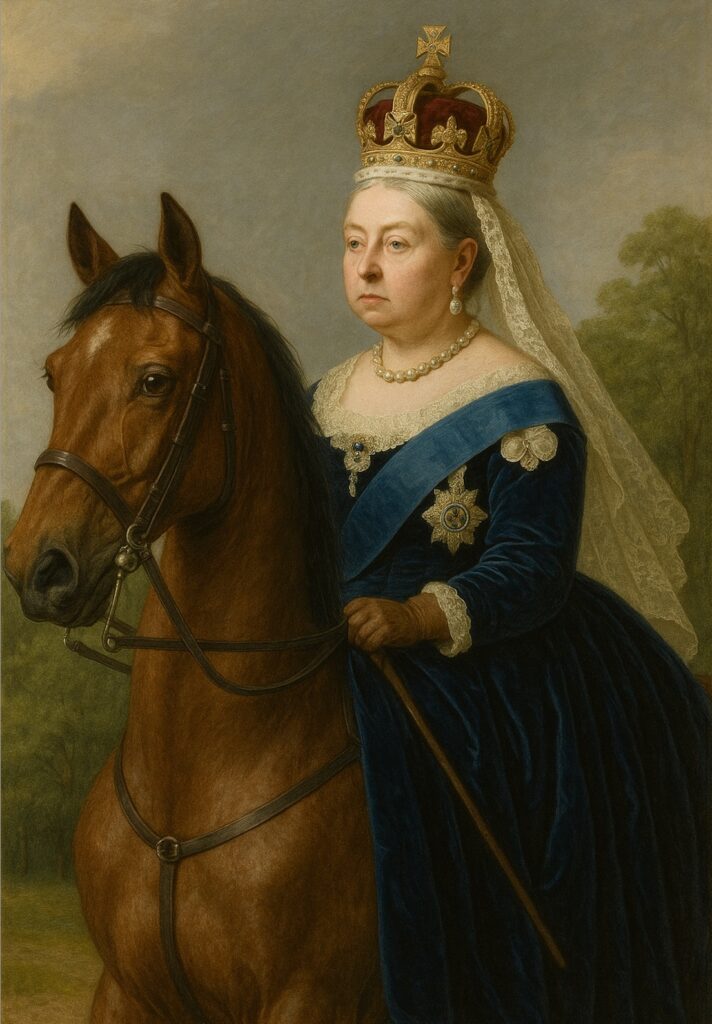
To give context, it was the last decade of Queen Victoria’s reign. Britain remained the ‘workshop of the world’ with railways, shipping and heavy industry. Emerging technologies included electricity, auto mobiles and telephones. The decline of agriculture saw more people move into cities and industrial jobs. This was a time when the British Empire was at its height, covering nearly a quarter of the world’s land after expanding into parts of Africa. The suffrage movement gained momentum. The 1891 Education Act saw free schooling. Charles Booth’s survey of London revealed the harsh realities of urban poverty influencing early welfare reforms. Football and cricket became mass spectator sports (The Football League founded in 1888). The Grand National was established as the country’s most famous steeplechase. In fact, horse racing was one of the most popular pastimes followed by both upper and working classes. Although off-course betting was technically illegal it flourished. Steeplechasing had a reputation of danger, attracting huge crowds. The growth of rail travel saw 40,000 spectators head to Aintree.
-
1890 – Ilex 4/1f *
-
1891 – Come Away 4/1f *
-
1892 – Father O’Flynn 20/1
-
1893 – Cloister 9/2f *
-
1894 – Why Not 5/1jf *
-
1895 – Wild Man Of Borneo 10/1
-
1896 – The Soarer 40/1
-
1897 – Manifesto 6/1f *
-
1898 – Drogheda 25/1
-
1899 – Manifesto 5/1
Horse trainer Willie Moore won the race three times with Why Not (1894), The Soarer (1896) and Manifesto (1899).
Most notables winners include the twice-winning Manifesto who prevailed in 1897 and 1899. He won the 59th and 61st running of the Aintree Grand National. He ran a record 8 times from 1895 – 1904.
Manifesto Aintree Grand National Race record:
1895 – 4th
1896 – Fell (first fence)
1897 – 1st
1899 – 1st
1900 – 3rd
1902 – 3rd
1903 – 3rd
1904 – 8th
A truly consistent bay gelding, bred by Harry Dyas, in the ownership of Dyas and Mr J. G. Bulteel. He was purchased by the latter in 1898 being sold for £4,000 and sent to Willie Moore’s stable.
He was intended to run in the 1898 Grand National but escaped when a stable boy left stable door open. Manifesto was recaptured but suffered a badly bruised fetlock after jumping a gate. He missed the National. However, he proved successful the following year under a weight of 12 stone 7 Ilbs. He won by five lengths from 40/1 shot Ford Of Fyne.
Manifesto won a prize of £3,000. A considerable amount of money for this time. For context, a working-class terrace house cost £250.
He was retired after the 1904 Grand National.
Another horse who deserves recognition is the 1893 winner Cloisters. A remarkably consistent horse who made his National debut in 1891, where he finished runner-up, ridden by Captain Roddy Owen.
Let’s take a look at his Aintree performances:
1891 – 2nd 20/1
1892 – 2nd 11/2
1893 – 1st 9/2f
Cloisters was considered one of the greatest National winners although a fragile horse who suffered injuries. His 1893 win by 40-lengths at top weight made him legendary at this time. In fact, he completed the course in a remarkable fast time of 9m 42 seconds. This was due to firm ground.
This decade of Grand National winners (1890 – 1899) saw an equal mix of winning favourites. Horses winning at greater odds included:
1892 – Father O’Flynn 20/1
1896 – The Soarer 40/1
1898 – Drogheda 25/1
With regard to the age of winners, the youngest saw the Ilex prevail in 1890 aged 6. While the oldest being Why Not in 1894 aged 13. It should be noted he is one of only two horses to win at such an age in the history of the Aintree Grand National, which dates back to 1839. The other horse being Sergeant Murphy (1923).
As for winning jockeys, Arthur Nightingall won twice with Ilex (1890) and Why Not (1894). He went on to win again in 1901 when riding Grudon for trainer Bernard Bletsoe. It was an unusual National as it was run in a snow storm. The conditions of the race race were described as ‘very bad’.
In summary, this decade of Aintree Grand Nationals from 1890 – 1899 saw a mix of winners.
It’s worth noting that the Wild Man Of Borneo (1895) was the name of the horse rather than the jockey.